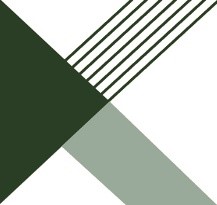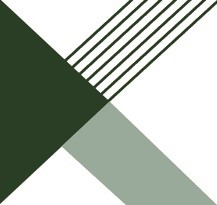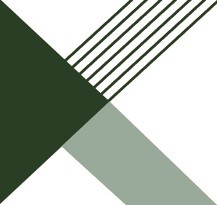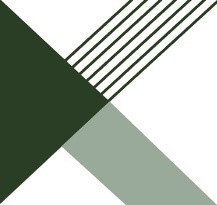Title Page
-
Scope (area/building/facility)
-
Conducted on
-
Inspection Completed By
-
Location
-
Instructions
1. Answer "✔", "✖", "Skipped", “N/A” on the items provided.
2. Tap on Notes or Image under each item to add comments or evidence.
3. To add a Corrective Action, tap on "Action", provide a description, assign to a member, set priority and due date.
4. Complete audit by providing digital signature.
5. Share your report by exporting as PDF, Word, Excel or Web Link.
1. WORK ENVIRONMENT
-
1.01 The workshop area is tidy and free of obstructions, tools and equipment not being used are stored appropriately and work benches not being used are clean and tidy.
-
1.02 No equipment, tools or articles are stored on the floor
-
1.03 Walkways/floor areas are clear of obstructions and trip hazards (e.g. electrical cords).
-
1.04 Floor surfaces/coverings are clean, level and are in good condition.
-
1.05 Stair treads are in good condition (no worn or broken treads).
-
1.06 Stair handrails are present, secure, and in good condition.
-
1.07 Landings and hallways are clear of obstruction
2. SIGNAGE
-
2.01 QHSE Policy and other required required posters (i.e. HSE health and safety law poster) are adaquately displayed
-
2.02 First aiders are displayed at entrance
-
2.03 Fire wardens are displayed at entrance
-
2.04 Hazard/safety signage throughout facility is appropriate and clearly visible, consider Access/egress, PPE, Chemicals, High temperature, Electrical, Noise
-
2.05 Signage for PPE is in compliance with PPE specified in Risk Assessment table
3. EMERGENCY / FIRST AID / FIRE REQUIREMENTS
-
3.01 Fire exit doors are marked, clearly visible and can be opened from inside
-
3.02 Fire exit signs are in place and illuminated
-
3.03 Exit corridors are clear of obstructions (including outside of the building)
-
3.04 First aid equipment (kits, defibrillators,…) is available and not expired
-
3.05 A first aider is available on site
-
3.06 A fire warden is available on site
-
3.07 Fire extinguishers are appropriate and accessible
-
3.08 Fire extinguishers have been inspected within last 12 months
-
3.09 Fire alarm tests have been conducted weekly (check fire log)
-
3.10 Fire evacuation drill has been performed in last 6 months
-
3.11 Fire procedures and building plan are displayed at the entrance
-
3.12 Fire procedures are being followed, i.e. visitors are wearing lanyards
-
3.13 Flammables stored in flammables store
-
3.14 No fuel sources are stored in the hot works area
-
3.15 Emergency Evacuation plan is available (Correct Revision)
-
3.16 Is the Emergency Contact details up to date
-
3.17 Fire Extinguisher monthly (Tamper checks have been completed)
4. ELECTRICAL
-
4.01 All electrical equipment tested, tagged and in date.
-
4.02 All power leads, outlets and switches are in good condition.
-
4.03 Electrical points and extension leads are not over loaded
5. STORAGE, LIFTING AND HANDLING
-
5.01 Stored items are safety loaded, restrained and labelled
-
5.02 Suitable materials handling equipment is available
-
5.03 Materials handling equipment is in good condition and records of inspection available
-
5.04 All lifting equipment is tagged with the correct colour code
6. PERSONAL PROTECTIVE EQUIPMENT
-
6.01 PPE is available, consider glasses, ear protection, gloves, boots as required by signage
-
6.02 PPE store is tidy and presentable
-
6.03 Personnel are wearing appropriate PPE for tasks (as required by signage)
7. CHEMICAL
-
7.01 All chemicals stored in chemicals cupboard unless being used
-
7.02 Chemicals stored in appropriate containers if being used
-
7.03 Containers are labelled correctly
-
7.04 (M)SDS sheets and other required documents (i.e. COSHH assessments) are available for all chemicals - as hardcopy and softcopy easily accessable
-
7.05 Spill kits are available and maintained
-
7.06 Chemical related equipment (i.e. fume cupboard) is in use and verified as ok (required inspection)
8. COMPRESSED GAS
-
8.01 Compressed gas bottle/cylinder contents are appropriately identified.
-
8.02 Bottles/cylinders are secured appropriately by bracket or chain.
-
8.03 Check gas storage cage and pipe work
-
8.04 No ignation source (i.e. technical heat, smoke area,…) in the near vicinity of bottles/cylinders
9. PLANT, EQUIPMENT, WORK TOOLS
-
9.01 Work procedures available at location of plant/equipment/tools and operators are following the guidance
-
9.02 Plant/equipment/tools maintained and in good condition
-
9.03 Emergency stops are working
-
9.04 Guarding on plant/equipment/tools is appropriate and in good condition
-
9.05 Warning labels are appropriate and visible
-
9.06 Risk assessment is available for plant/equipment/tools
10. VEHICLES
-
10.01 Are the company vehicles (forklifts, trucks, vans, cars,…) maintained weekly and recorded
-
10.02 A first aid kit is available in trucks, vans, cars
-
10.03 Are company & staff vehicles parked safely without blocking access points or delivery areas and reverse park policy is followed
-
10.04 Is a fire extinguisher available in trucks, vans, cars
11. PROCESS AND RISK ASSESSMENT
-
11.01 Risk assessments (RA) available for ongoing work/tasks
-
11.02 Findings of RA implemented appropriately, i.e. isolation, barriers, PPE, safety devices
-
11.03 Work forms are available and correctly in use for ongoing work
-
11.04 Operators are appropriately trained and/or supervised for work
-
11.05 Equipment is in good condition and part of regular maintenance regime
-
11.06 Material/products of different status are clearly separated: input/row, in process/unfinished, finsihed, waste
12. WELFARE AND WORK CONDITIONS
-
12.01 Lighting adequate and operational
-
12.02 Temperature is comfortable in entire area
-
12.03 Area is free from odours
-
12.04 Noise level is acceptable or controlled to an adequate level
-
12.05 Ventilation is adequate
-
12.06 Is there appropriate facilities for hot food and water
-
12.07 Are washrooms and shower facilities clean and in good condition, including soap, hand towels,…
13. WASTE AND CLEANING
-
13.01 Waste is emptied regularly and stored in the correct bins
-
13.02 Cleaning and housekeeping stock is available
-
13.03 Waste streams/areas correctly identified
-
13.04 Waste skips/bins contain correct materials
-
13.05 Waste (Oils etc.) stored/contained appropriately prior to licenced removal
14. INCIDENTS
-
14.01 Are incidents being reported and recorded in online system
-
14.02 Are actions from incidents being allocated and addressed
-
14.03 Are staff aware of the incident reporting tool
-
14.04 Is the accident/incident data available and up-to-date.
15. STAFF PARTICIPATION AND AWARENESS
-
15.01 Does staff member know where to find QHSE policy
-
15.02 Does staff member know what to do in event of fire
-
15.03 Does staff member know how to report incidents including near misses, first aid incidents and accidents
-
15.04 Does the staff member know where to get access to the Emergency Evacuation Plan / Emergency Response Plan
-
15.05 Has the staff member completed a Display Screen Assessment
16. COMPLIANCE OBLIGATIONS AND THREATS
-
16.01 Has the Legal compliance register been checked for updates (6 months)
-
16.02 Has an evaluation of the legal compliance been carried out (6 months)
-
16.03 Is the Environmental aspects and impacts register up to date.
17. EMERGENCY PREPAREDNESS AND DRILL
-
17.01 Is the Emergency Response Plan available and up-to-date?
-
17.02 Does the planning of Emergency Response and Drills consider specific work related risks and scenarios, i.e. Battery, NORM,…
-
17.03 Has a drill been performed within the last 12 months?
-
17.04 Have all required actions which were derived from last drill completed?
SIGN-OFF
-
Inspection Completed By (Name and Signature)










